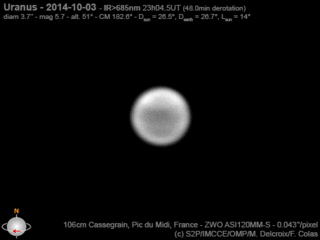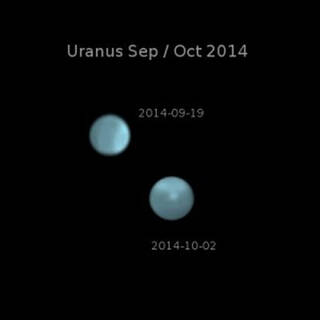NASA’s New Horizons spacecraft plans to observe Uranus and Neptune from its location far out in the outer solar system this fall, and the mission team is inviting the global amateur astronomy community to come along for the ride – and make a real contribution to space science – by observing both ice giants at the same time.
NASA’s New Horizons Team Calls for the Amateur Astronomical Community to Augment the Mission’s Observations of Uranus and Neptune
NASA’s New Horizons spacecraft plans to observe Uranus and Neptune from its location far out in the outer solar system this fall, and the mission team is inviting the global amateur astronomy community to come along for the ride – and make a real contribution to space science – by observing both ice giants at the same time.

In September – in tandem with the Hubble Space Telescope – New Horizons will turn its color camera toward Uranus and Neptune. From New Horizons’ position in the Kuiper Belt, more than 5 billion miles from Earth, these unique images acquired from “behind” the two giant planets will provide new insights into the atmospheres above and the energy balance within both worlds.
“By combining the information New Horizons collects in space with data from telescopes on Earth, we can supplement and even strengthen our models to uncover the mysteries swirling in the atmospheres of Uranus and Neptune,” said Alan Stern, New Horizons principal investigator from the Southwest Research Institute in Boulder, Colorado. “Even from amateur astronomer telescopes as small as 16 inches, these complementary observations can be extremely important.”
With New Horizons and Hubble focused on the details of the planets’ atmospheres and the transfer of heat from their rocky cores through their gaseous exteriors, observers on Earth can measure the distribution of bright features on Uranus or characterize any unusually bright features on Neptune. They can also track those features much longer than either spacecraft.
Following the campaign, observers can post their images – as well as the details of when they were made and in what filter passbands — on X (formerly Twitter) or Facebook using the hashtag #NHIceGiants. The New Horizons team will see and collect the images and supporting information placed on these platforms using this identifying hashtag.
Full details on the campaign – including finder charts and observation tables – are available on the New Horizons website at (URL to come).
The Hubble images of Uranus and Neptune will be made publicly available in late September on the Mikulski Archive for Space Telescopes, or MAST, at archive.stsci.edu. The New Horizons team expects to receive the images of Uranus and Neptune from the spacecraft by the end of 2023 and will make them available as well.
The Johns Hopkins Applied Physics Laboratory in Laurel, Maryland, designed, built and operates the New Horizons spacecraft, and manages the mission for NASA’s Science Mission Directorate. Southwest Research Institute, in San Antonio and Boulder, Colorado, directs the mission via Principal Investigator Alan Stern, and leads the science team, payload operations and encounter science planning. New Horizons is part of the New Frontiers Program managed by NASA’s Marshall Space Flight Center in Huntsville, Alabama.
Follow New Horizons on its incredible voyage at https://www.nasa.gov/newhorizons and http://pluto.jhuapl.edu.


























